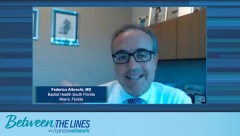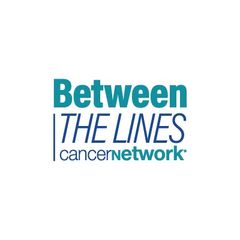
EGFR-Mutant NSCLC: Addressing Gaps When Collecting Data
Federico Albrecht, MD, reacts to limitations regarding the designs and outcomes of randomized controlled trials in EGFR-mutant non–small cell lung cancer and describes his interest in collecting real-world data.
Episodes in this series

Lyudmila Bazhenova, MD: I’d like to ask Dr Albrecht: What’s the key take-home message you have from this paper?
Federico Albrecht, MD: Thank you, Dr Bazhenova. Great presentation. It’s very important to acknowledge that the randomized controlled trial is the gold standard. We all know that it’s the gold standard for evidence-based medicine, and this is how we advance science, right? The problem is that we also need to understand the limitations of those randomized controlled trials. We know that the randomized controlled trials would test efficacy and safety under well-controlled, well-defined clinical conditions in select patients. That’s a problem sometimes because it includes a narrow group of patients who follow a strict inclusion and exclusion criteria. When you’re talking about inclusion and exclusion criteria, you’re excluding patients. None of the patients will fit for those randomized controlled trials. It’s important to know how those patients who weren’t included in those randomized clinical trials will do with such therapy. This is how the real world evidence is coming.
The real-world evidence will provide complementary data to these randomized clinical trials in real-world events, meaning that we include all those patients who weren’t incorporated into the randomized clinical trials. It’s important to know and understand the limitation of the randomized clinical trials, such as generalizability. The randomized clinical trials are costly and take a long time. When you have a comparator—for example, the standard of care—by the time the trial is presented, that standard of care is no longer relevant because the real-world patients are receiving something else. This is how real-world evidence comes in handy. Many regulatory agencies, including ASCO [American Society of Clinical Oncology], have recognized these assays as a very valuable way to obtain data in a way to help the clinician. The thoracic oncologists who make decisions in the clinic with real patients weren’t incorporated into those randomized clinical trials.
It’s important to find out—1 of the key things that happened—why we’re seeing more real-world data in this country. It’s because we use electronic medical records. The collection of data electronically gives us the opportunity to collect that data retrospectively or prospectively and to make sense of that data. What Dr Bazhenova showed in the slides comparing the randomized clinical trials vs large retrospective observational trials added to those randomized clinical trials. Those are the keys to understanding the differences between the 2 and how the 2 complement the information that the clinician has to treat thoracic patients. In the second part we’ll talk a little more about the EGFR-specific group of patients, right?
Lyudmila Bazhenova, MD: Yes, that’s perfect. Thank you for your answer.
Transcript edited for clarity.
Newsletter
Stay up to date on recent advances in the multidisciplinary approach to cancer.
















































































